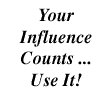

Reprinted from www.libertylobby.org, home of The SPOTLIGHT archive
Here's How Feds Manipulate Market
- Unless you follow the market religiously, you are probably not aware of how the government controls Wall Street.
The trouble with the Clinton administration's deceptive -- and feloniously illegal -- scheme to jack up stocks and bonds with taxpayer's money is that "a market that has been rigged is no longer really a market; it's just another government trading post," as DeWitt Gould, who ran his own reporting service until his retirement last year, says.
"The original function of the stock and bond exchanges was to serve as the heart monitors, the independent gauges and arbiters of the national economy," he added. "Buying and selling a corporation's securities involved a judgment on its performance and creditworthiness. Cumulatively, the markets told us each day about how commerce and industry were doing around the country."
But the Clinton-era markets are like steam boilers with their safety valves wired shut, says business writer Rita Hauser, who covers Wall Street for Germany's largest news organization.
"We can sense the pressure rising, but we cannot relieve it until there's an explosion," she added. "Just take a look at the way the bureaucrats have meddled with the warning circuits of the New York Stock Exchange."
Introduced by the Clinton administration and known as "circuit breakers," the directives cited by Hauser are intended to mask the first signs of a market crisis by slowing and restricting trade along the following lines:
- If the Dow-Jones index falls more than 50 points from the previous day's close, block traders such as arbitragers are barred from the floor unless their orders are designed to counteract the drop in stock prices.
- If the so-called Standard and Poor futures index of stocks slumps by 2 points or more (roughly equivalent to a 100-point drop of the Dow-Jones index) all activity is suspended for 10 minutes ans so-called program trading (i.e. large-scale computerized speculation) is halted for the rest of the day.
- If the Dow's downturn reaches 250 points, the directive closes down all the major U.S. stock exchanges for "at least one full hour." The shutdown holds, theoretically, for an additional two hours if the slump continues.
"In reality, of course, this is simply a scheme to give the government time to move in and bail out a sinking market," says Mrs Hauser. "It is the most crude and heedless attempt to juice up a fraudulent boom I've ever seen. It's bound to end in a shattering fall."